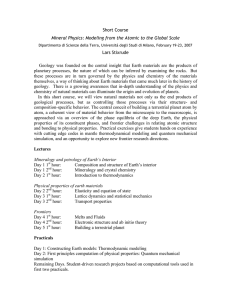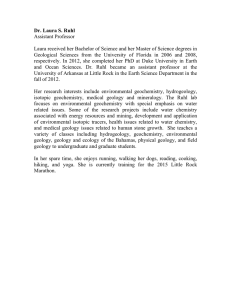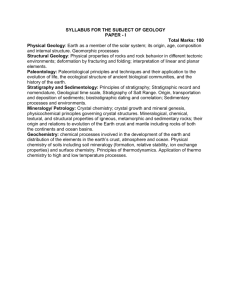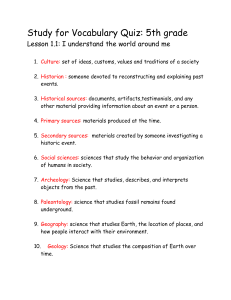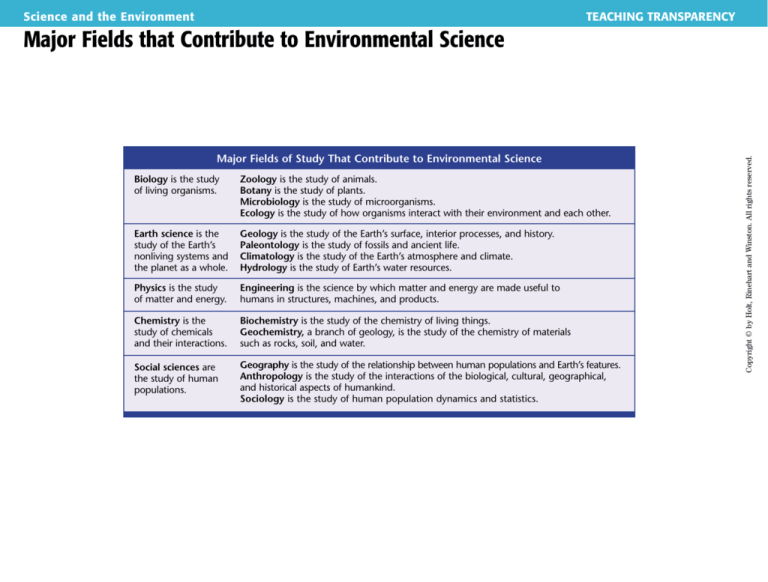
Science and the Environment
TEACHING TRANSPARENCY
Major Fields of Study That Contribute to Environmental Science
Biology is the study
of living organisms.
Zoology is the study of animals.
Botany is the study of plants.
Microbiology is the study of microorganisms.
Ecology is the study of how organisms interact with their environment and each other.
Earth science is the
study of the Earth’s
nonliving systems and
the planet as a whole.
Geology is the study of the Earth’s surface, interior processes, and history.
Paleontology is the study of fossils and ancient life.
Climatology is the study of the Earth’s atmosphere and climate.
Hydrology is the study of Earth’s water resources.
Physics is the study
of matter and energy.
Engineering is the science by which matter and energy are made useful to
humans in structures, machines, and products.
Chemistry is the
study of chemicals
and their interactions.
Biochemistry is the study of the chemistry of living things.
Geochemistry, a branch of geology, is the study of the chemistry of materials
such as rocks, soil, and water.
Social sciences are
the study of human
populations.
Geography is the study of the relationship between human populations and Earth’s features.
Anthropology is the study of the interactions of the biological, cultural, geographical,
and historical aspects of humankind.
Sociology is the study of human population dynamics and statistics.
Copyright © by Holt, Rinehart and Winston. All rights reserved.
Major Fields that Contribute to Environmental Science


